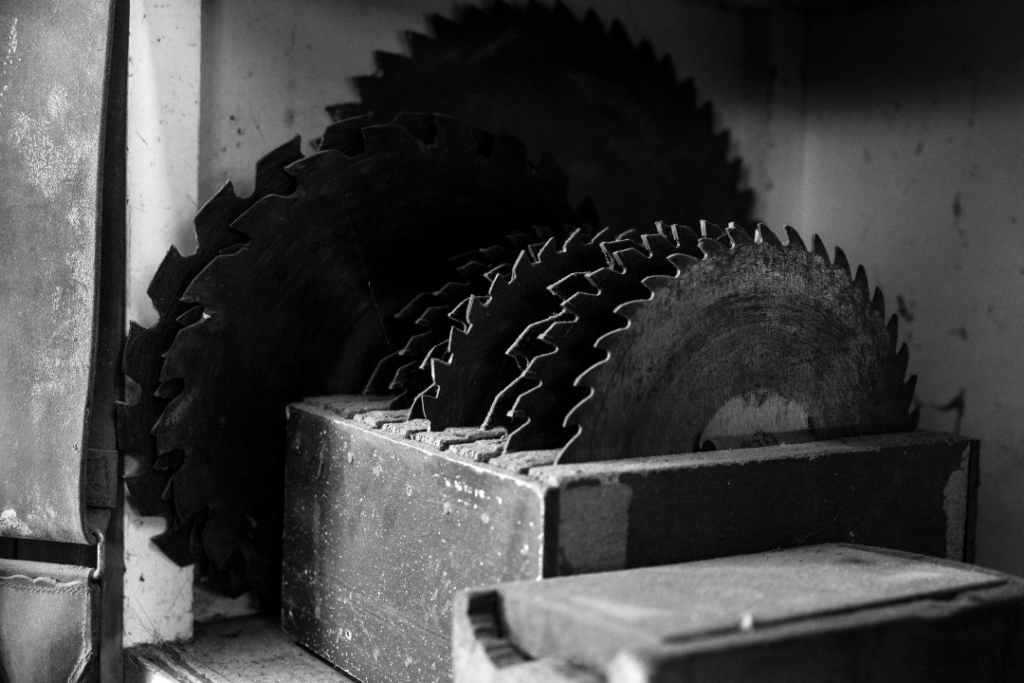Have you ever grabbed a circular saw blade, ready to tackle a project, only to find it rusted, dull, or chipped?
I’ve been there more times than I care to admit during my years in construction. Improper storage is often the cause, and it can cost you time, money, and frustration.
As someone who works with saws daily, I know how important it is to keep your blades in top condition. Whether you’re a weekend DIY enthusiast or a seasoned professional, good blade storage isn’t just a nice-to-have it’s essential. But figuring out how to do it right can feel confusing at first.
That’s why I’m sharing what I’ve learned from years of experience. In this guide, I’ll show you practical, easy ways to store your blades safely. You’ll learn how to prevent rust, avoid damage, and keep your workspace organized—all while protecting your investment.
Why Proper Storage of Circular Saw Blades Matters

- Safety First
Circular saw blades are razor-sharp and dangerous if not stored properly. I’ve seen how exposed edges can cause accidental injuries—nobody wants that in their workspace. Tossing loose blades into a drawer turns them into hazards. Safe storage reduces the risk and keeps your space injury-free.
- Protect Your Blades
Careless storage ruins blades. I once left a blade in a damp toolbox overnight, and rust destroyed it. Proper storage prevents rust, chips, and warping, keeping your blades sharp and saving you money on replacements.
- Optimize Performance
Sharp blades mean clean, precise cuts and faster work. Damaged or rusted ones result in rough cuts and strain on your saw. Storing blades correctly ensures they’re always ready to perform at their best.
Safe, organized storage isn’t just tidy—it’s key to safety, savings, and top-notch results. Take care of your blades, and they’ll take care of your work.
How to Store Circular Saw Blades: Some Important Way
1. Wall-Mounted Pegboards:

Pegboards are a simple and flexible way to store circular saw blades. Add hooks or small pegs to hold each blade securely. Label the pegs with the blade’s size or type so you can find what you need quickly. This method keeps blades off your workbench and easy to access.
2. Custom Blade Storage Racks:
Building your own storage rack is a useful DIY project. You can use woods or metals to create dividers or slots for each blade. Mount the rack on a wall or place it on your workbench. This setup is perfect if you have several blades and need to keep them organized and protected.

3. Blade Bags or Cases:

For professionals who move their tools often, blade bags or cases are a great option. These are designed to protect blades from damage and usually include dividers to prevent blades from rubbing against each other. They also work well for long-term storage when blades are not in use.
4. Drawer Dividers:
If you like storing tools in drawers or toolboxes, dividers can help organize your blades. You can use adjustable dividers made of plastic or metal, or you can create your own from foam or cardboard. Dividers keep blades from touching and prevent accidental damage.
5. Magazine-Style Wall Rack:
A magazine-style wall rack holds blades upright in individual slots, like storing magazines on a shelf. Build this with thin wood or acrylic panels, making the slots snug enough to keep blades in place. This design makes blades easy to grab and keeps them safe.
6. Knife Block-Style Storage:
Repurpose a knife block or make your own to store circular saw blades. Use a block of wood with evenly spaced grooves to hold the blades upright. This is a compact storage method that protects the edges and fits well in small spaces.
7. French Cleat Wall System:
A French cleat system is a modular storage solution that lets you customize your setup. Attach cleats to the back of blade holders or cases, then mount them on a wall cleat. You can rearrange or expand the system as your blade collection grows.
8. Magnetic Strip Storage:
Magnetic strips are a good option for lightweight blades. Install a strong magnetic bar on the wall and attach blades to it. Make sure the blades are dry and clean to avoid scratches or rust. This method works best for occasional-use blades or as part of a larger storage system.
Maintenance Tips to Complement Storage
- Clean Before You Store
Always clean your circular saw blades before storing them. Dust, resin, and grime can dull the teeth and lead to rust. Use a soft brush with a mild degreaser or blade cleaner, and ensure the blade is completely dry to avoid moisture damage.
- Use Blade Guards
Blade guards are essential for safety and protection. They prevent accidental cuts and shield teeth from chipping or dulling. Purchase guards or create DIY covers with cardboard or foam for an affordable solution.
- Rotate Blades Regularly
Blades left in one position too long can warp due to uneven weight distribution. Rotating them occasionally, especially if stored flat or stacked, keeps them balanced and in top condition.
Best Practices for Circular Saw Blade Care and Maintenance
Regular Cleaning
Keep your saw blades performing their best by cleaning off resin, sap, and debris regularly. Use a mild cleaner and a soft brush, and dry the blade thoroughly to prevent rust.
Careful Handling
Always grip blades by the center hole or flat edges, not the sharp teeth, to avoid damage. Store them securely in covers or storage systems to prevent nicks or accidents.
Sharpening & Maintenance
Inspect blades often for dull or chipped teeth. Sharpen as needed with a kit or professional service, ensuring proper tooth shape and angle for optimal performance.
Match Blades to Tasks
Use the right blade for each material—wood, metal, or plastic—for cleaner cuts and longer blade life. Avoid overusing one blade for every task to prevent premature wear.
Prioritize Safety
Always check for damage before use and secure the blade properly on your saw. Wear protective gear like gloves and goggles, and handle blades with care.
Proper care, from cleaning to safe use, ensures your blades stay sharp, safe, and ready for every project!
Conclusion
Proper storage and care of circular saw blades are about more than just keeping your workspace neat. They are essential for safety, efficiency, and protecting your investment. By organizing your blades with smart storage solutions, cleaning them regularly, and storing them correctly, you can make them last longer and keep them performing their best.
Whether you’re a pro or a weekend DIYer, taking good care of your tools always pays off. Use these tips to set up a storage system that fits your needs, and keep your blades sharp, safe, and ready for your next project.
Do you have your own storage ideas or tips for blade care? Share them below and help others improve how they take care of their tools!
FAQ
- Can I store circular saw blades in their original packaging?
Yes, the original packaging works well for short-term storage. It offers basic protection against moisture and physical damage. For long-term storage, though, consider using blade cases or racks for better durability and organization.
- What’s the best way to prevent rust on my circular saw blades?
Store blades in a dry area away from moisture. Applying a light coat of machine oil or a rust inhibitor before storage can add extra protection. Using silica gel packs in storage containers helps absorb excess moisture.
- Is it safe to hang circular saw blades on hooks?
Yes, hanging blades on hooks or a pegboard is safe as long as they’re secure and the sharp edges are protected. Adding blade guards or covers will enhance safety and prevent accidental contact.
- How should I store carbide-tipped blades differently from steel blades?
Carbide-tipped blades are more fragile and prone to chipping. Use blade cases or dividers to keep their teeth from touching hard surfaces or other blades. Steel blades are sturdier but should still be kept dry and protected from rust.
- Can I stack circular saw blades on top of each other?
It’s not a good idea to stack blades directly on top of each other because their teeth can chip or dull. If you must stack them, place a piece of cardboard, foam, or another protective material between each blade.
- How often should I inspect my stored blades?
Inspect your blades every few months to check for rust, warping, or other damage. This is especially important if they’re stored in areas with high humidity or temperature fluctuations.
- What’s the best way to organize blades for easy access?
Label your blades with information like size, type, and purpose. Organize them by category (e.g., wood-cutting, metal-cutting) and store them in racks, cases, or drawers to make retrieval quick and easy.
- Can I store circular saw blades outdoors?
No, storing blades outdoors is not recommended. Moisture, temperature changes, and dirt can cause rust and damage. Always store blades in a climate-controlled indoor space.
- Are blade storage cases worth the investment?
Yes, especially if you transport your blades frequently or need professional-level organization. Storage cases protect blades from damage, keep them organized, and are portable, making them ideal for DIYers and professionals alike.
- What materials can I use to make a DIY blade storage rack?
You can use materials like plywood, MDF, PVC pipes, or even old pallets. These options are affordable, easy to work with, and customizable to fit your specific storage needs.

